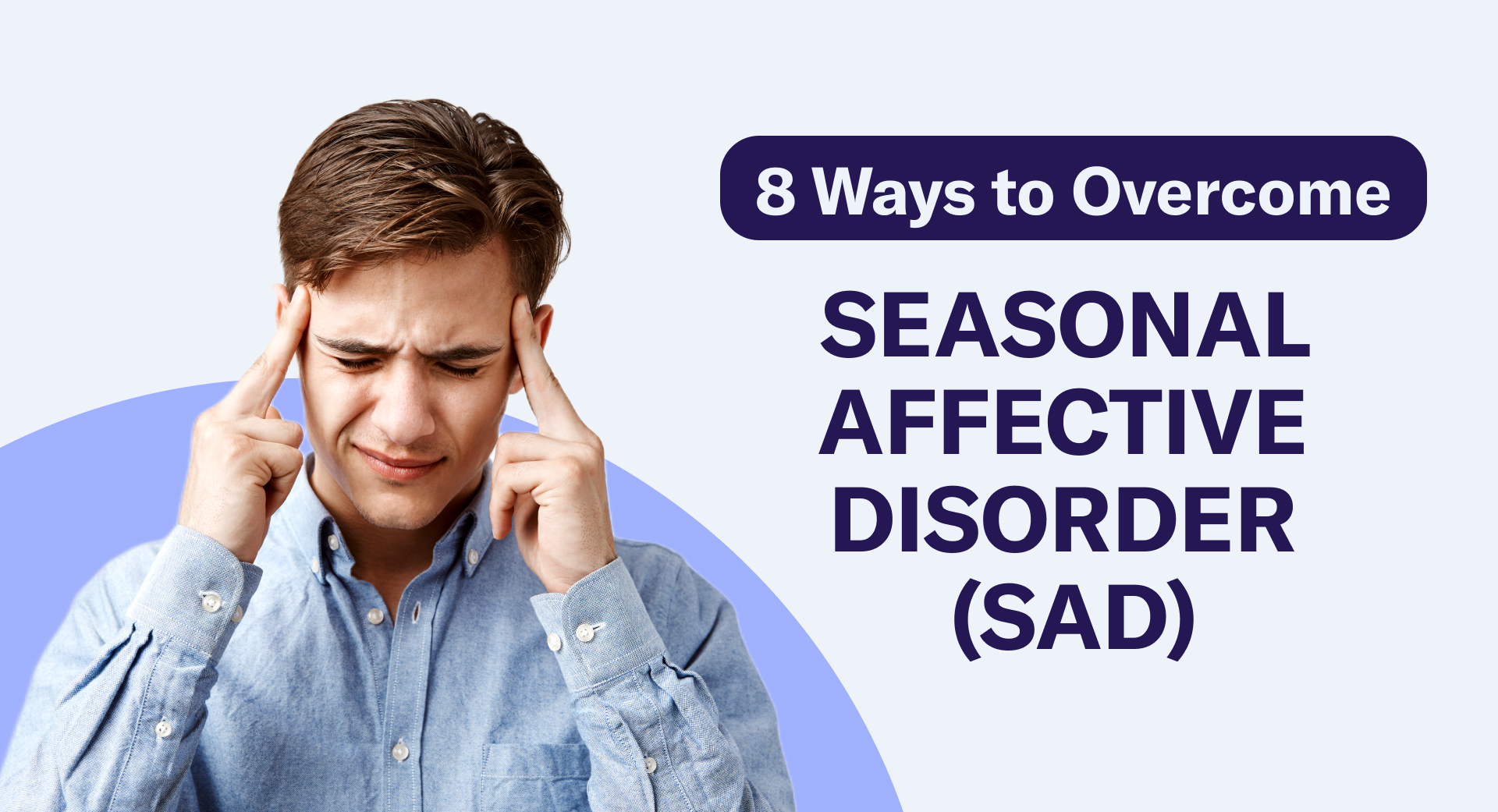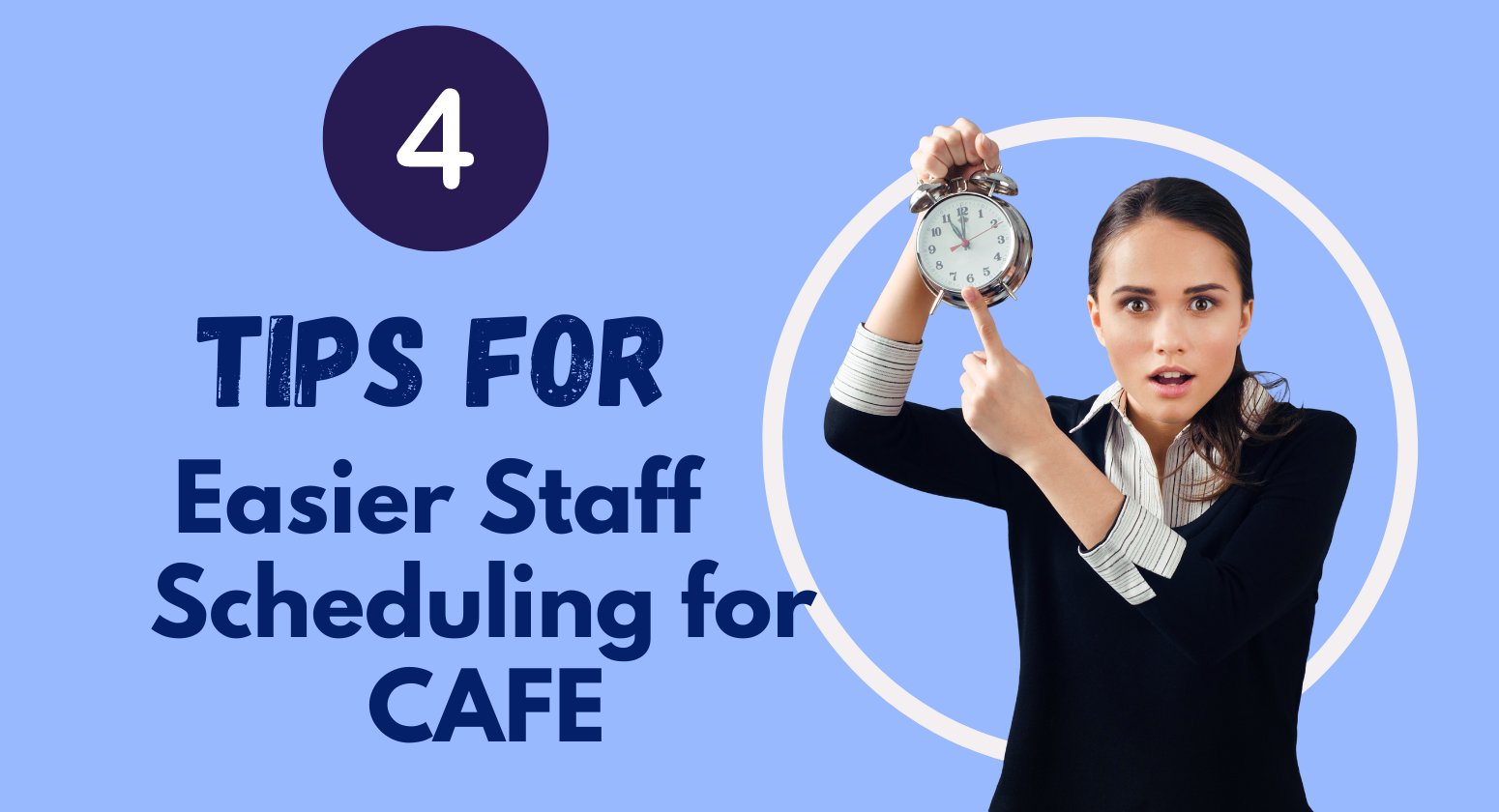
Do you find yourself feeling flat, down, or sad during the winter months? ❄️
During winter, the dark mornings loom, and the days grow shorter. The crispness in the air and the frost on the ground ☃️ may excite some, but for others, it’s a symbol of a downward spiral of negative feelings. This is known as Seasonal Affective Disorder (SAD).
If this resonates with you, you may be suffering from SAD. According to the NHS, SAD “affects around 2 million people in the UK and more than 12 million people across northern Europe.” So, you’re not alone.
In this blog, we’ll explore Seasonal Affective Disorder and look at ways to overcome sadness during the winter months. Let’s get into it.🌙

Source: NHS
What is Seasonal Affective Disorder (SAD)?
Seasonal affective disorder (SAD) is a type of depression that is caused by the changes in seasons. 🌧🍂
It occurs during the autumn and winter months as the amount of natural daylight decreases. As the days become shorter and the amount of light is limited, some people struggle with their mental health.🌗
Here are some typical signs and symptoms of SAD:
- Low energy
- Feeling sad almost every day 😔
- Losing interest in different activities
- Difficulty concentrating
- Sleeping too much 🥱
- Changes in appetite like craving carbohydrates, overeating, and experiencing weight gain
- Feeling guilty, hopeless, or worthless 😖
- Having thoughts of not wanting to exist or suicide
It’s important to remember that not everyone will experience the same symptoms. Some people might have more extreme symptoms, and others may only experience one or two of the list.📝
However, if you feel any of these symptoms at any point, getting help is essential. If you or someone you know is experiencing depressive symptoms, seeking the help of a healthcare professional is vital.
Things you should do if you have SAD
If you are diagnosed with SAD or experiencing any of the symptoms mentioned above, there are things that you can do to help you out.
Here are some protective steps to help you manage your symptoms:
1. Consult a healthcare professional💬
Consulting a healthcare professional is the first step you should take if you’re experiencing seasonal depressive symptoms. A professional will evaluate your symptoms and discuss how you’re feeling with you. They may also look into your family history, too.👩⚕️
From there, you should receive a plan of action to try to lessen your symptoms and find strategies to overcome the way you feel. For example, they may suggest light therapy, dietary supplements, medication, or lifestyle changes, depending on the severity of your feelings and symptoms.
Speaking to a professional is also helpful as it gives you the chance to tell someone how you’re feeling. This often helps people who feel lonely, depressed, or anxious as it releases their inner thoughts and emotions with someone there to listen.👂
2. Have more vitamin D🌞
When we’re exposed to natural sunlight, our bodies naturally produce vitamin D. So, it’s no surprise that there’s a lack of it during specific seasons like autumn and winter. Vitamin D plays a large role in the relegation of emotions and mood.🙃
According to the National Center for Complementary and Integrative Health (NCCIH), low amounts of Vitamin D are normal in people with SAD. This can be because of lack of sunlight or low intake of Vitamin D. The study, “The effect of vitamin D supplement on negative emotions,” found that vitamin D supplementation can reduce negative emotions.😌
3. Explore light therapy💡
Who would have known that artificial light would be helpful for SAD? But according to the study, “Seasonal affective disorder treatments”, it is! The NHS explains that light therapy “involves sitting by a special lamp called a light box, usually for around 30 minutes to an hour each morning.” The light boxes come in a variety of designs, from desk lights to standing ones.🛋
By being exposed to a bright light therapy box that mimics sunlight🌞, your brain will undergo a chemical change that will uplift your mood and help relieve symptoms of SAD. You just need to use it for 20-30 minutes per day, preferably when you wake up in the morning. Although this is safe and effective, it would be better to ask your doctor first before you use it.
However, it’s important to be aware of some potential side effects of light therapy. These could include:
- irritability
- headaches or eye strain👁
- sleeping problems (avoiding light treatment during the evening and opting for the morning may help prevent this)💤
- tiredness
- changes to your sight, including blurred vision👓
If you experience any of these side effects, talk to a professional or your doctor.
Dawn simulators are another form of light therapy. It usually comes in the form of an alarm clock and is programmed to wake you up at a particular time by mimicking the natural sunlight.🌅

Source: BrainyQuote
4. Consider aromatherapy🕯
Aromatherapy is the use of oils for therapeutic purposes. Based on a review published by the Yale Journal of Biology and Medicine, essential oils may decrease symptoms of depression and other mental health issues. This is because essential oils may potentially affect the part of the brain that controls mood and the body’s internal clock, which influences appetite and sleep.
Evidence about its effects is limited, but they can improve our mental well-being even in a minimal way when paired with other soothing activities like taking a bath.🛁
5. Socialize with others👬
“No man is an island.” It’s what people always say, but it’s true. According to the study “The psychological impact of quarantine and how to reduce it”, isolation can cause long-term psychological impact, which includes symptoms of post-traumatic stress disorder (PTSD) and depression. Maintaining social connections can reduce loneliness and improve feelings of isolation.🏝
Aim to prioritize seeing friends or spending time with your loved ones. Make social plans that you can look forward to. You could also look to meet new people by joining an exercise group or a local art class.🎨
This will help to expand your social network, increasing your mood as you feel a sense of belonging. Consider joining a support group and exploring your feelings with others experiencing SAD.
6. Exercise⛹️♂️
Exercise enhances the production of endorphins, which are known as the feel-good hormones.😃 This will decrease stress and aid other kinds of depression, like SAD. Since SAD can make you gain weight, physical activity will also help offset that.
Find exercises that you genuinely enjoy, and this will help your motivation when it comes to it. For example, you may enjoy jogging, dancing, or cycling🚴♀️. If possible, aim to exercise in the natural light before it gets dark. This will help to increase your vitamin D levels at the same time. It’ll also offer the chance for some fresh air, which is beneficial for a low mood.

Source: The Habitista
7. Meditate🧘♂️
Based on scientific evidence, meditation helps people manage SAD. This is because meditation causes the release of melatonin, which can promote relaxation. It also increases serotonin levels, which may be prescribed to treat SAD. Mindfulness helps you focus on the moment, and you can take long, slow, deep breaths to relax your body and engage your mind.🧠
Long meditation may not be possible in your daily routine, but the addition of mindful activities can help you gain the benefits that you need.🧘
Dr. John W. Denninger, director of research at the Benson-Henry Institute for Mind Body Medicine at Harvard-affiliated Massachusetts General Hospital, states that “Meditation trains the brain to achieve sustained focus, and to return to that focus when negative thinking, emotions, and physical sensations intrude — which happens a lot when you feel stressed and anxious.”
8. Write in a journal📝
Writing in a journal is a good outlet for your emotions. It helps boost your mood by releasing negative emotions out of your body. It also allows you to identify your triggers and prioritize life’s problems. According to Amy Hoyt, Ph.D., founder of Mending Trauma, “Journaling can be a great pressure releasing valve when we feel overwhelmed or simply have a lot going on internally.”
You can also write about the things that you are grateful for, so you’ll know the reasons why you should be happy. The best time to write is during the night to reflect on everything that happened during the day.🌙

Source: Healthline
Conclusion
Having Seasonal Affective Disorder is not easy. But through the help of a professional and by using the proper techniques, you will be able to combat SAD and enjoy winter without the blues🌗. By following these SAD remedies and including them in your daily routine, you can protect yourself from feeling worse or suffering further.
Remember, you are not alone, and there is always someone you can talk to to help🤝. Whether it’s a healthcare professional, a doctor, or a loved one and friend, there are people to reach out to. Even in the darkest of days and the coldness of winter, there’s light to be found and enjoyed.💡
For more information on employee wellness and creating a positive workplace culture, check out our other blogs!





